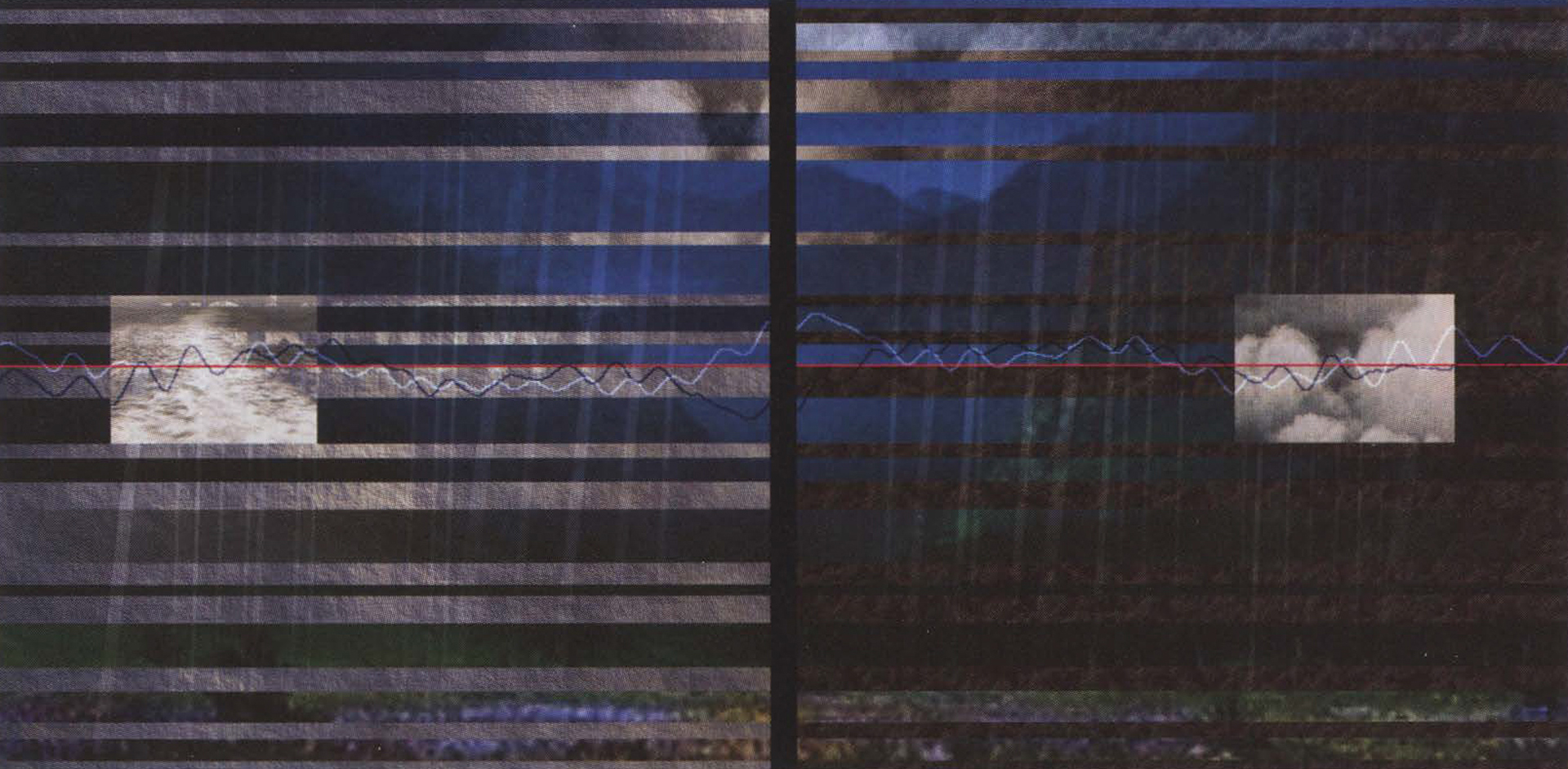Kerry John Andrews: Voice
Artist(s):
Title:
- Voice
Exhibition:
Creation Year:
- 2004
Medium:
- Digital print
Size:
- 30 inches x 54 inches
Category:
Artist Statement:
Voice is simply about the reflexive nature of language seen through echo and reverberation. Computer-generated surface patterns are interspersed with photographs and a sound-wave form. These visual interpretations of experience are augmented by an audio element that plays with details of sound and silence as well as movement. In a sense, the sound is meant to give a longer duration to the reading of the image. Conversely, the sound is divided by silences, creating a tension to the duration. In Voice, I have aimed to explore some of the ideas expressed by psychologist Paul Fitts in the following quote, where he points out the different temporalities of sight and hearing: Each sense modality has certain inherent advantages and disadvantages for the detection and analysis of different kinds of information. Audition is more nearly a continuous sense than vision; vision is basically selective and intermittent. As a consequence, audition is well adapted for the detection of warning stimuli that may arise at any moment from one of a variety of sources, whereas vision is well suited to the selection of and concentration on particular stimuli to the exclusion of others. Paul Fitts, Engineering Psychology and Equipment Design, in Handbook of Experimental Psychology, New York and London: John Wiley & Sons, Inc., 19512004
Technical Information:
Several of the series of digital prints I have made over the past eight years have been designed for different kinds of output, as this is one of the possibilities inherent to the computer as a creative medium. Voice has two versions, one for lightboxes (duratrans) and another as two photographic prints. Both versions have an audio element for CD player and headphones. The sound element of this piece is based on a recording of birdsong that was taken apart using various sound-editing programmes. Essentially, the material was deconstructed and magnified so that the single voice became an orchestra of tones, sliding scales, and percussive sounds. Other sounds were generated from the computer to include artifacts of the process (the voice of the medium). The images were constructed in a drawing programme and contain digitally generated sections/layers as well as imported photographic images, text, drawn objects and imported sound-programme graphics. These elements are layered as interactive transparencies and constructed into divided sections, creating an image that aims to be both continuous and discontinuous.





